Contents
Self-fertile pear varieties are also called self-pollinated. They provide a harvest even in the absence of other representatives of their species in the neighborhood. There are many self-fertile varieties with different characteristics.
What does self fertile pear mean?
Common pears require cross-pollination to bear fruit. It involves at least two trees and insects that carry pollen. Self-pollinating varieties of pears do not need this. They bring a crop even without the neighborhood of other trees of their kind.
The degree of self-fertility varies. In some cases, without pollinators, the yield will be too low.
The best self-fertile varieties of pears with a description and photo
Breeders regularly develop new varieties of pears, including self-fertile ones. Among them, one can single out those that are particularly attractive according to certain criteria.
August dew
The variety of summer ripening has been listed in the State Register since 2002. Its characteristics:
- small height;
- fast growth;
- the crown is slightly drooping, the density is moderate;
- fruits of medium size;
- color when removed is green, at consumer maturity greenish-yellow with a slight blush and many subcutaneous dots;
- fine-grained juicy white pulp, sweet and sour;
- yield up to 20 tons per 1 ha;
- fruiting from the age of four.
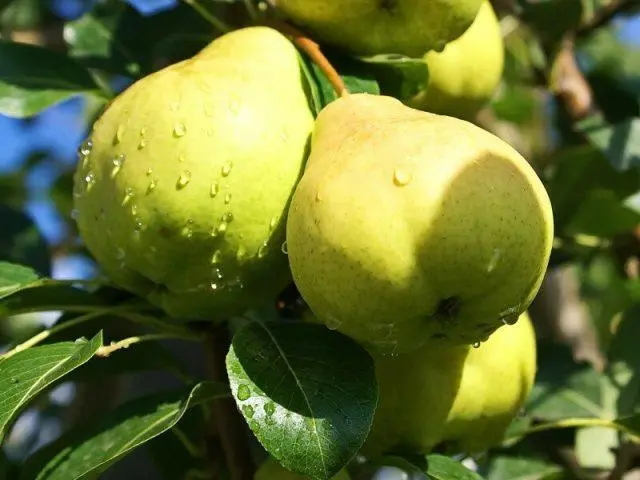
The self-fertile variety Avgustovskaya dew has good winter hardiness and immunity to scab
Tenderness
This variety is early autumn. The trees are medium-sized – they reach a height of 4 m. Main characteristics:
- rare, but voluminous crown;
- cube-shaped fruits of 150 g;
- the color is first bright green, then yellowish-greenish with a slight pink blurred cover;
- the pulp is juicy and tender;
- sweet and sour taste;
- fruiting from the fourth year;
- yield up to 40 kg per tree.

Self-fertile pear Tenderness has good immunity to scab, excellent winter hardiness in the Moscow region
Lada
This summer self-fertile representative of the culture has been in the State Register since 1993. Her description:
- medium-sized standard trees;
- the crown is first funnel-shaped, then pyramidal, the density and foliage are moderate;
- obovate fruits of 105 g;
- the color is light yellow with a slight reddish blush;
- the yellowish-white pulp has a fine-grained structure, moderate juiciness and density;
- taste sour-sweet;
- fruiting from 3-4 years;
- one tree brings up to 50 kg of crop.
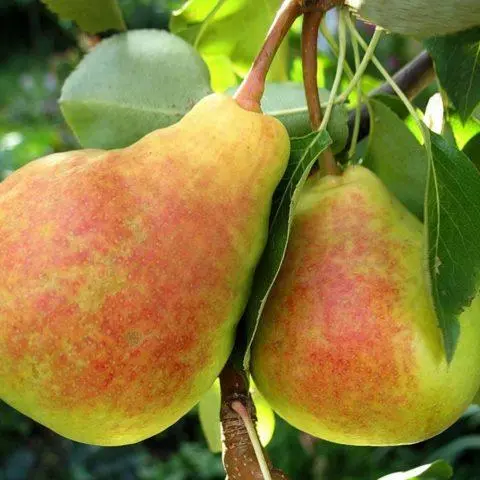
The Lada pear is considered partially self-fertile, therefore, for a good harvest, pollinator varieties are needed in the neighborhood.
Rogneda
Late summer variety in the State Register since 2001. Its description:
- moderate strength of growth;
- a rare crown of a round-oval shape;
- rounded fruits of 120 g each with a smooth and shiny skin;
- light yellow color with many small subcutaneous dots;
- sweet taste;
- juicy slightly oily pulp has a moderate density, beige-white color;
- pronounced nutmeg aroma;
- fruiting from 3-4 years.
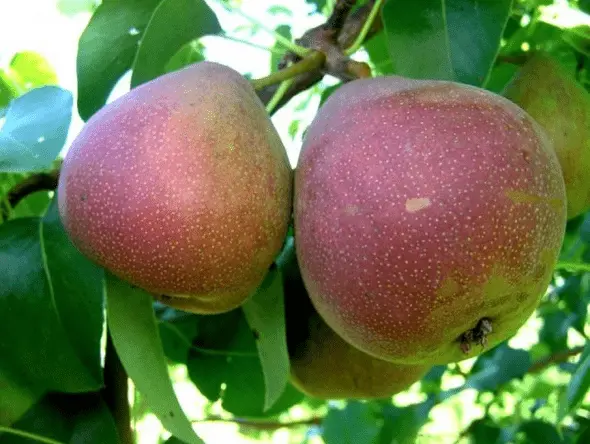
Self-fertile pear Rogneda is immune to scab, fruit rot
Prominent
This summer variety has been in the State Register since 2001. Main characteristics:
- vigorous tree;
- the crown is sprawling, pyramidal as it grows, the foliage is moderate;
- elongated pear-shaped fruits weighing 150-180 g;
- color greenish-yellow with a slight reddish-orange tan;
- juicy oily white pulp has a yellowish tint, dense structure;
- sour-sweet taste, there are notes of nutmeg;
- fruiting from 4-5 years;
- yield 50 kg per tree;
- high winter hardiness;
- good immunity to fungal diseases.

The harvest of the self-fertile pear Vidnaya is harvested in 2-3 doses, since ripening does not occur simultaneously
Cathedral
This summer variety has been listed in the State Register of the Federation since 2001. Its description:
- average height;
- regular conical crown, moderate density;
- pear-shaped fruits of 110 g;
- the surface is bumpy;
- the color is greenish-yellow, at consumer maturity light yellow with a weak blurred red cover;
- sweet and sour taste;
- tender and juicy semi-oily pulp has a fine-grained structure, moderate density, white color;
- yield 8,5 tons per 1 ha.
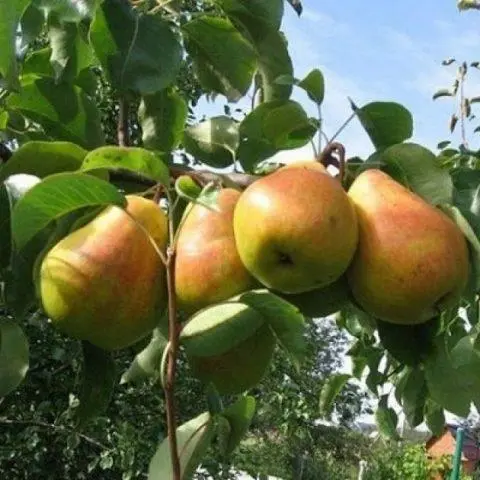
The self-fertile pear Cathedral has immunity to scab, good winter hardiness
Chizhovskaya
Late summer variety in the State Register of the Federation since 1993. Main characteristics:
- standard type, medium height;
- a narrow crown at a fruiting age is replaced by a pyramidal one;
- pear or obovate fruits, 130 g each;
- the color is yellow-green, a slight blurry pink blush is possible;
- melting semi-oily pulp has medium juiciness, almost white or light yellow color;
- sour-sweet taste with refreshing notes;
- aroma weak;
- yield up to 50 kg per tree, the first for 3-4 years after grafting.
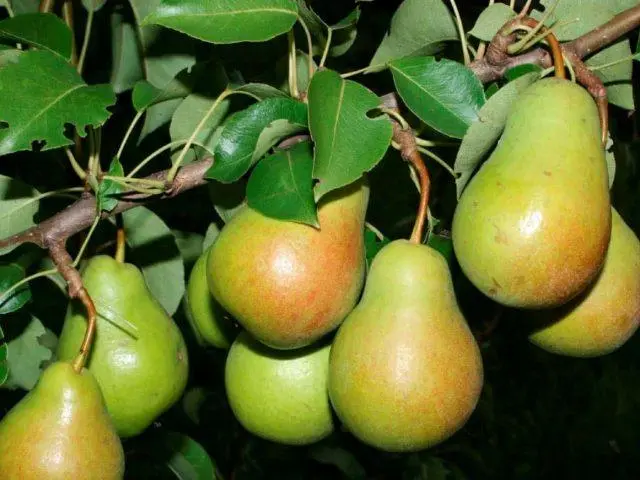
Self-fertile pear Chizhovskaya has high winter hardiness, immunity to scab and other diseases.
In memory of Yakovlev
Early autumn variety in the State Register of the Federation since 1985. Main characteristics:
- small trees;
- rounded crown;
- wide-pear-shaped fruits of medium size;
- the color is first light, then golden yellow with an orange cover and a few subcutaneous blotches;
- the juicy semi-oily pulp has a creamy tint;
- the taste is sweet;
- fruiting for 3-4 years;
- productivity over 22 tons from 1 hectare.
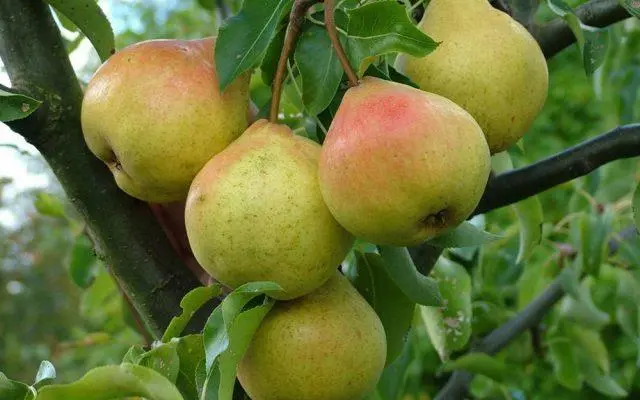
Self-fertile pear Pamyat Yakovlev is highly resistant to frost and scab, but not enough to drought
Efimova Elegant
Autumn variety, listed in the State Register of the Federation since 1974. Main characteristics:
- big trees;
- the crown is pyramidal, the growth is fast, the density is moderate;
- elongated pear-shaped fruits of 90-120 g;
- the color is first greenish, then light yellow with a red cover and many pronounced subcutaneous dots;
- dense, but tender, semi-oily pulp has good juiciness, a whitish-cream shade;
- taste sour-sweet;
- aroma is weak;
- yield up to 30 tons per 1 ha.
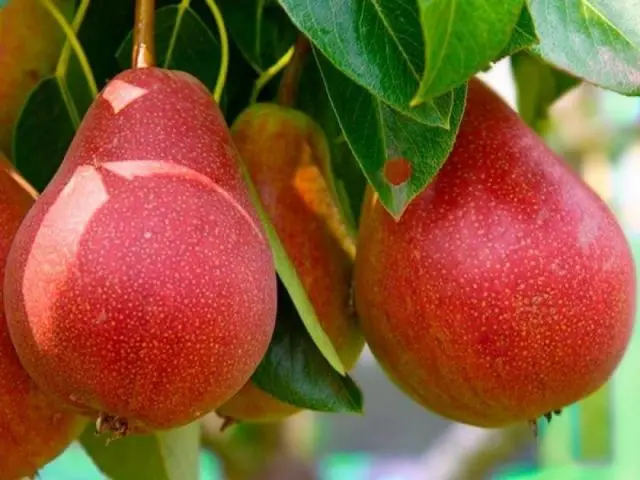
Harvest variety Elegant Efimova can be stored for 2-3 weeks
Veles
Autumn variety in the State Register of the Federation since 2001. Main characteristics:
- medium trees;
- the crown is first sprawling, then broadly pyramidal;
- wide-pear-shaped fruits of 150-180 g;
- greenish-yellow color with a slight reddish tan;
- creamy juicy and tender pulp has an average density, semi-oily structure;
- the taste is sour-sweet, dessert;
- fruiting from 5-7 years;
- good immunity to fungal diseases.
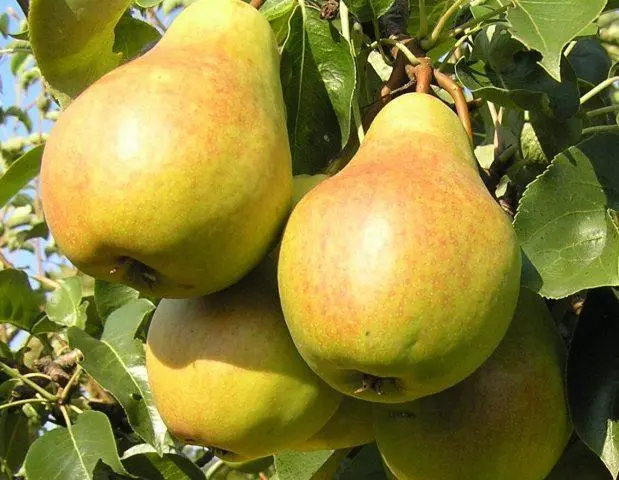
It is recommended to harvest the Veles self-fertile pear crop until fully ripe so that it can be stored until November
Decor
This late summer variety belongs to the self-fertile dwarf pears, is columnar. Its description:
- height up to 2 m;
- narrow crown of vertical type, tendency to thickening;
- pear-shaped fruits of 200-300 g;
- yellow color with red blush;
- sweet taste;
- pronounced aroma;
- high frost resistance.
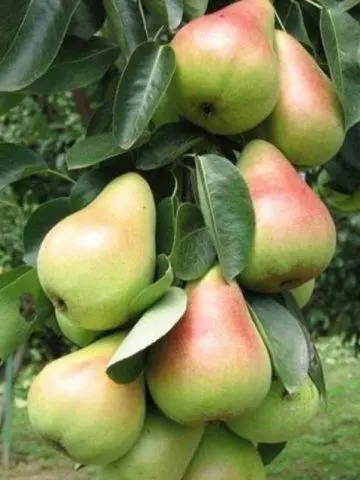
The harvest of the self-fertile pear Decora is recommended to be harvested in several stages as it ripens so that the fruits do not crumble
Sapphire
This variety is columnar. Its main characteristics:
- height up to 2-3 m (only dwarf stock);
- pear-shaped fruits with pronounced heterogeneity – from 50 to 350 g;
- color is yellowish green with a pink-burgundy blush on the south side;
- creamy white juicy flesh;
- sweet and sour taste;
- fruiting from 3 years;
- yield 10-15 kg from a 6-year-old tree;
- frost resistance up to -25 °C;
- immunity to scab, bacterial burn.
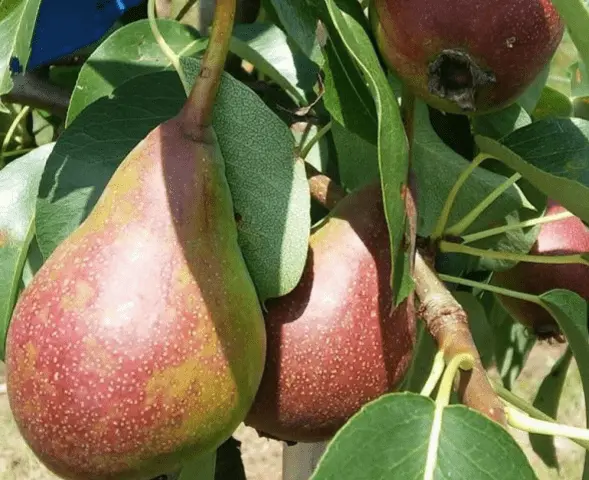
Sapphire pears ripen by early October
Grand Champion
It is an autumn variety of American origin. Its main characteristics:
- medium trees;
- compact pyramidal crown;
- elongated pear-shaped fruits of 180-220 g;
- golden-orzhavlennaya color with many small bright brown subcutaneous dots;
- the tender and juicy pulp has an oily texture, creamy shade;
- taste sweet and sour, excellent;
- fruiting from 3-4 years;
- yield 14,5 tons per 1 ha (at the age of 10-15 years).
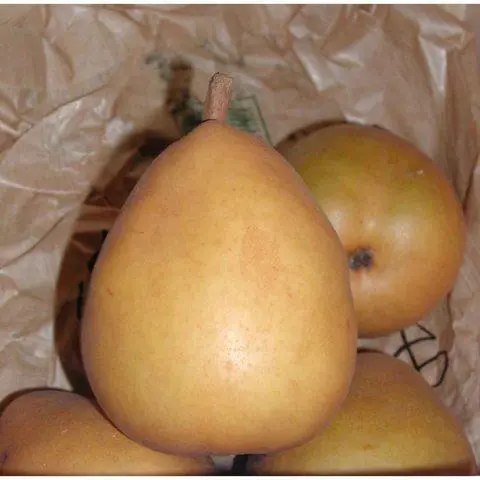
The self-fertile Grand Champion pear is scab-resistant and moderately frost-resistant
Banquet
The variety is late autumn and is on state trials. Main characteristics:
- average height;
- dense broad-pyramidal crown with strong foliage;
- rounded fruits of 260 g;
- a dull greenish-yellow color, a blurry raspberry tan is possible on the sunny side;
- juicy and tender pulp has an oily texture, a white tint;
- the taste is sour-sweet, dessert;
- fruiting from 3-4 years when planted with one-year-old seedlings;
- productivity is high;
- storage in the refrigerator until January.

Self-fertile pear Banquet has a high drought and winter hardiness, immunity to diseases is average
Marble
An old summer variety, entered into the State Register of the Federation in 1965. Main characteristics:
- strength of growth is average;
- the crown is wide-pyramidal;
- round-conical fruits of 165 g;
- greenish-yellow color with a marbled orange-red blush;
- tender coarse-grained pulp has increased juiciness, a white or cream shade;
- the taste is sweet;
- fruiting from 6-7 years after budding in the nursery;
- average yield 20 tons, maximum 42 tons per 1 ha;
- high resistance to scab, powdery mildew.

The self-fertile pear Marble is not sufficiently drought-resistant, winter hardiness is optimal for the Central Black Earth Region
Peculiarities of growing
Self-fertile pears are grown in the usual way. An important point is to choose the right place that must meet the following requirements:
- sufficient illumination, the south side is better;
- remoteness from buildings, high plantings;
- protection from north winds;
- fertile, air- and moisture-permeable soil.
If the pear is partially self-fertile, then pollinators are needed. Without them, the yield will be significantly lower. Pollinating varieties are selected with identical flowering periods. It is optimal to use 3-4 varieties, plant trees no further than 10-15 m from each other.
Many self-fertile pears are impressive in size, so crown formation is important. Systematic pruning is required so that it does not thicken. Also remove all damaged and dried branches.
In the spring, care should be taken to prevent diseases and pests. It is appropriate to use drugs, folk remedies.
So that the branches do not suffer under the weight of the fruit, supports are installed in a timely manner. If necessary, normalize the yield.
Conclusion
Self-fertile pear varieties should produce a crop even without the neighborhood of pollinators, although for some varieties they are still needed. Such representatives of the culture differ in terms of ripening, size, taste and color of fruits, yield, resistance to drought, frost, disease.









